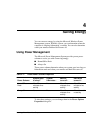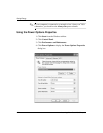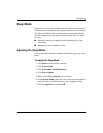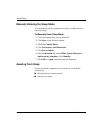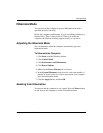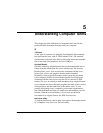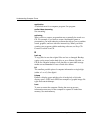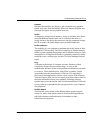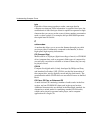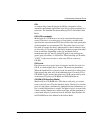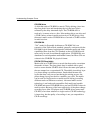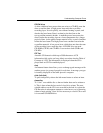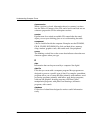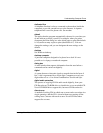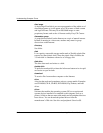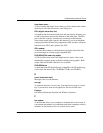
5–4 Learning More About Your Computer
Understanding Computer Terms
byte
Eight bits of data strung together to make a message that the
computer can interpret. Most information is organized into bytes, the
standard unit of data. One byte of data is required to represent a single
character that you can see on the screen (a letter, number, punctuation
mark, or other symbol). For example, the byte 01001000 represents
the capital letter H. See bit.
C
cable modem
A modem that allows you to access the Internet through your cable
service provider. Continuously connected to the Internet, it allows
high-speed, high-capacity data transfer.
CD (Compact Disc)
Media used in a CD player (digital recordings of music) or CD-ROM
drive (computer data, such as programs). Both types of compact disc
are read-only; once data is recorded or written to them, they can only
be played or read.
CD-DA
Compact disc-digital audio. Jointly developed by Philips and Sony
and launched in October, 1982, CD-DA was the first incarnation of
the compact disc, used to digitally record and play back music. The
standard under which CD-DA discs are recorded is known as the Red
Book.
CD Extra, CD Plus, or Enhanced CD
A multi session CD containing a number of audio tracks in the first
session, and one CD-ROM XA data track in the second session.
Additional characteristics are defined in the Blue Book standard. An
alternative to mixed-mode for combining standard CD-DA audio,
which can be played in a normal audio player, and a computer
application on a single CD.



